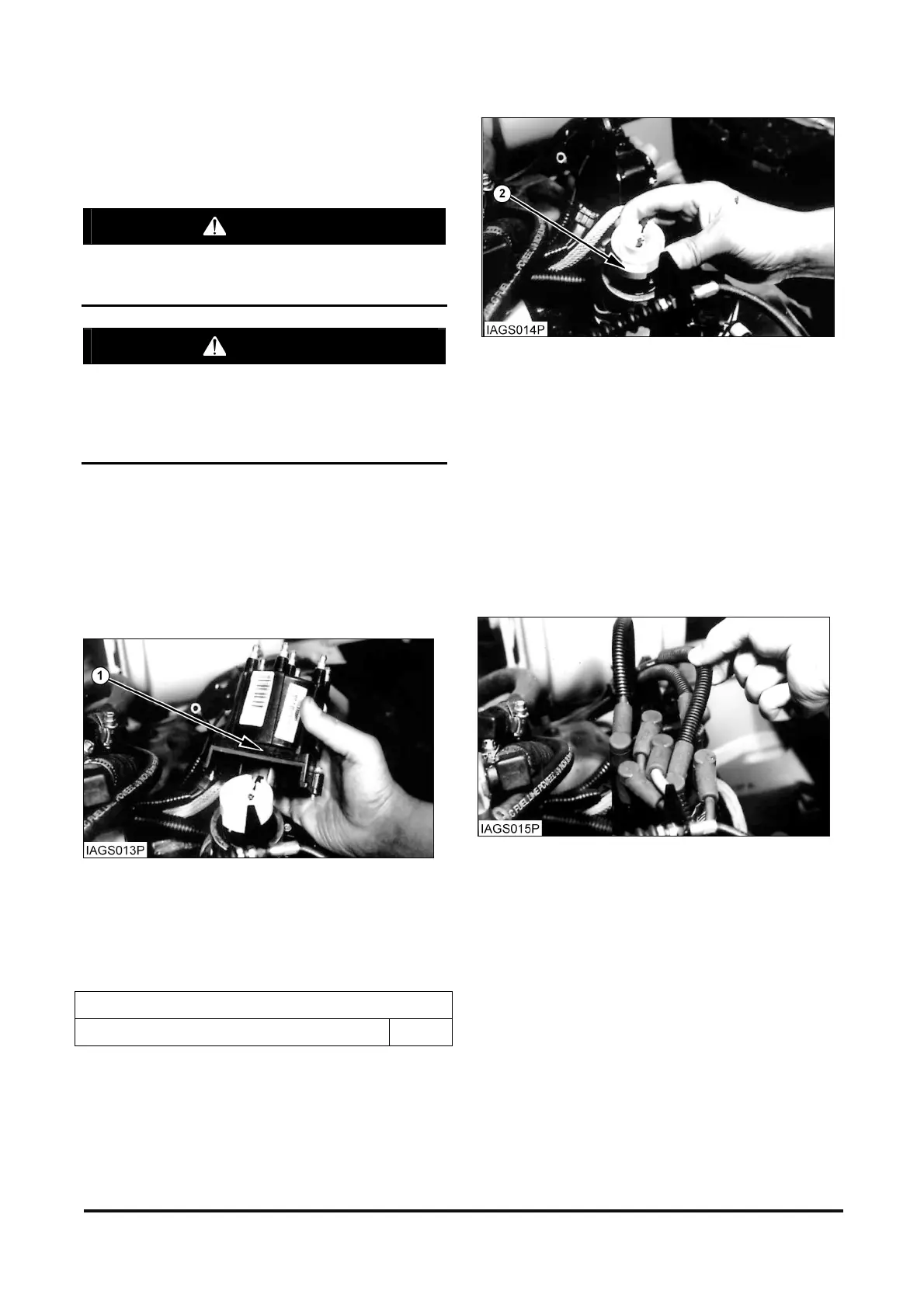G643(E) Service Manual Chapter 4. Engine Electrical System 115
Ignition System Inspection
Adhere to the following warnings when performing
any tests or adjustments while the engine is running.
WARNING
Work carefully around an engine that is running.
Engine parts that are hot, or parts that are
moving, can cause personal injury.
WARNING
Exhaust fumes contain carbon monoxide (CO)
which can cause personal injury or death. Start
and operate the engine in a well ventilated area
only. In an enclosed area, vent the exhaust to
the outside.
If the engine will not start, do the steps for ignition
Component Checks. Check the starting and the fuel
systems for correct operation. If these systems are
correct, use the procedures given in ignition System
Test to check the ignition system.
Ignition Component Checks
Distributor Cap Inspection
(1) Distributor cap.
The procedures that follow are given as a guide.
Use these procedures to find possible solutions for
ignition problems.
Tools Needed
Digital Mutimeter or Equivalent 1
1. Inspect distributor cap (1). Look for breaks, cracks
or dirt inside and on the outside. Clean the
distributor cap inside and out.
Inspection of Distributor Rotor
(2) Distributor rotor.
NOTE: Current models do not have a resistor in the
rotor and do not need to be checked for resistance.
2. Inspect the rotor (2) for breaks and cracks. Check
the rotor blade and the spring for tension. Check
the rotor for fit on the distributor shaft. Replace the
rotor if the spring tensionor its fit on the distributor
is not correct
For the correct resistance value of rotor, see
Distributer in Specifications.
Spark Plug Wires Inspection
3. Inspect the spark plug wires and the ignition coil
wire for wear, burnt and high voltage leaks. Check
the resistance of the spark plug wires, with a
Digital Multimeter.
For the correct resistance value, see Spark Plug
And Spark Plug Wires in Specifications.
NOTE: The Electrical System Analyzer can be used
on the ohmmeter scale for the spark plug resistance
test.

